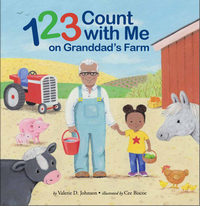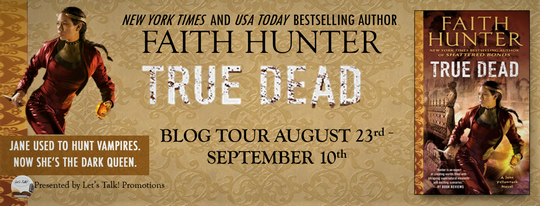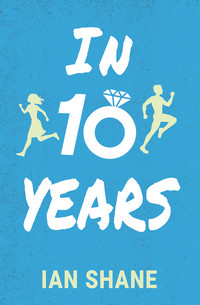Earlier this morning, I posted about Valerie D. Johnson’s 1 2 3 Count with Me on Granddad’s Farm. Now I have the opportunity to share this Q&A she participated in with me–this is a picture book with a difference, and it’s that difference that makes it special. But I should let her talk about it.
Your author bio starts with “math whisperer,” which is a great title—I could’ve used one of those forty years ago! Would you describe what you mean by that and tell us a little more about your background and how it led to you writing children’s books?
During my tenure as a classroom teacher, I noticed that students often exhibited math anxiety or expressed how much they disliked math. Truth be told, I never thought of myself as a “math person.” Math was not my favorite subject as a student; it was too abstract. But now that I’m a mathematics specialist, I not only know the how, but I also understand the why. Now, I LOVE MATH and it is my mission to ignite a love of math in all children, one book at a time.
My superpowers are making learning math easy to understand, engaging, meaningful, and fun. And, I help to build math confidence and cultivate a positive math mindset in children with classroom-tested teaching strategies (i.e. encourage mistakes, play games, use tools, etc.).
I have served in education as a classroom teacher, math instructional lead, and currently as a math specialist. As a math specialist, I design and deliver professional development steeped in research and best practice in education. I also coach teachers in finding new teaching methods, tools, and techniques to improve math instruction.
Can you talk a little about the genesis of this particular book and the series?
Some children think of themselves as readers and not mathematicians. They think that math is not engaging and fun. I’d like to help all children develop a positive attitude about math and think of themselves as both readers and mathematicians through charming, math-themed stories with beautiful illustrations.
For over two decades, I’ve always wanted to write a book that would impact the lives of young mathematicians. So, after two years of sleepless nights, lots of editing, and learning about the children’s book industry, I will finally get to share my story with the world. I have poured my heart, time, and effort into writing a picture book, 1 2 3 Count with Me on Granddad’s Farm, that was inspired by summers on the farm with my grandfather.
The illustrations are adorable—how did you team up with Cee Biscoe? What was the process of working with her to combine story and pictures?
Illustrating my picture book went through a lot of stages and took many months to complete. I found my illustrator, Cee Biscoe, with the help of a publishing company that I hired to edit, design, and format my book. She’s a traditional illustrator specializing in children’s books, with work published in over 20 countries worldwide.
First, I sent her my manuscript along with other background information so that she could start imagining how everything would look. Over the next several weeks, we collaborated on character development. I sent her pictures of possible character hairstyles, clothes, and features from my vision board. Then, she drew pencil sketches of the characters and animals. Next, she planned what to show on each page of the story (to determine if there would be single or double-page spreads). Then, she created the thumbnail sketches, rough sketches, and full-size sketches. Revisions also occurred during that time. Once the page layouts (text placement and illustrations) were finalized, she painted the final artwork on large sheets of watercolor paper using gouache paint.
You don’t just tell the story, you give some tips for the parent/teacher/whoever who is reading to/with the child to help spur and develop counting in the book and in real life, with some discussion questions to get the child thinking about numbers. I absolutely love that. Was this where the series came from—looking for ways to get parents/etc. to talk about numbers and counting and then using the story as a vehicle for that?
My picture book was created as a way to engage students in meaningful math practice at home and introduce young readers to my grandfather.
I have two passions—teaching math and empowering parents to support learning at home with tips, tools, and hands-on tasks. Parental involvement helps to increase student engagement and academic achievement. Parents can also help make learning less scary by practicing math at home. Learning to count is more than just memorizing and calling out numbers. The book’s back matter helps little ones develop (and reinforce) a strong foundation in counting and quantity by engaging in meaningful learning experiences (i.e. practicing the counting sequence, counting a collection, matching the number words with the objects being counted, exploring the idea of more or less, etc.) with visual supports.
The Discussion Starters, questions in the back of the book, help young readers comprehend and analyze the story for deeper meaning. The visual models (counting dots, fingers, animals, etc.) on the following pages help little ones to dive deeper into counting and reasoning mathematically.
This book isn’t just about numbers—it’s numbers and family, right? It’s common to set picture books on a farm, but you bring in an individual angle—it’s your actual grandfather’s farm and you bring him in as a character. Could you talk a little about that choice?
This story was inspired by summers on my grandfather’s farm and pays tribute to the special bond between children and their grandfathers. The concept of the book is based on my work with young mathematicians in grades K-6 as an Elementary Math Resource Specialist. And, I dedicated this book to my Aunt Katherine Johnson, NASA Mathematician and Hidden Figure, because she loved to count.
This is the first of a series, what other settings are you going to be counting in? Do you have a schedule for what’s to come?
The setting for the next book in the 1 2 3 Count with Me series will take place in my hometown, Philadelphia. But, I haven’t decided whether I’ll finish the manuscript and publish the next counting book or a growth mindset book.
Thanks for your time—and thanks for introducing me to your grandfather—I hope these books take off!








